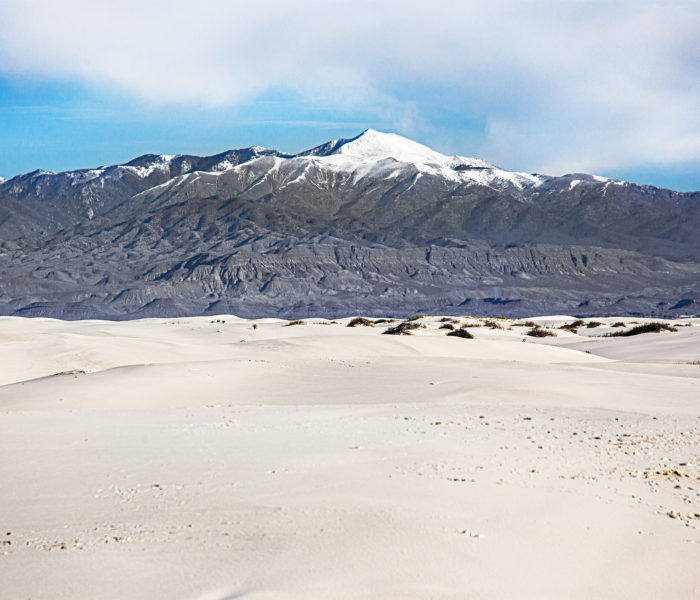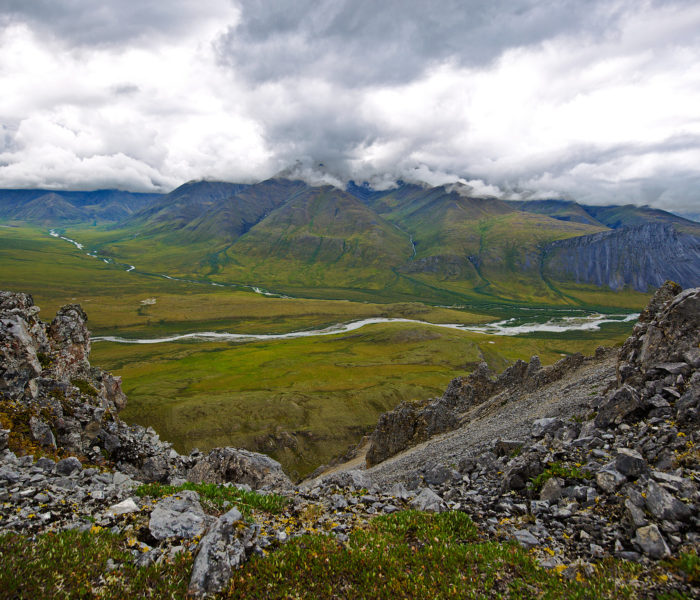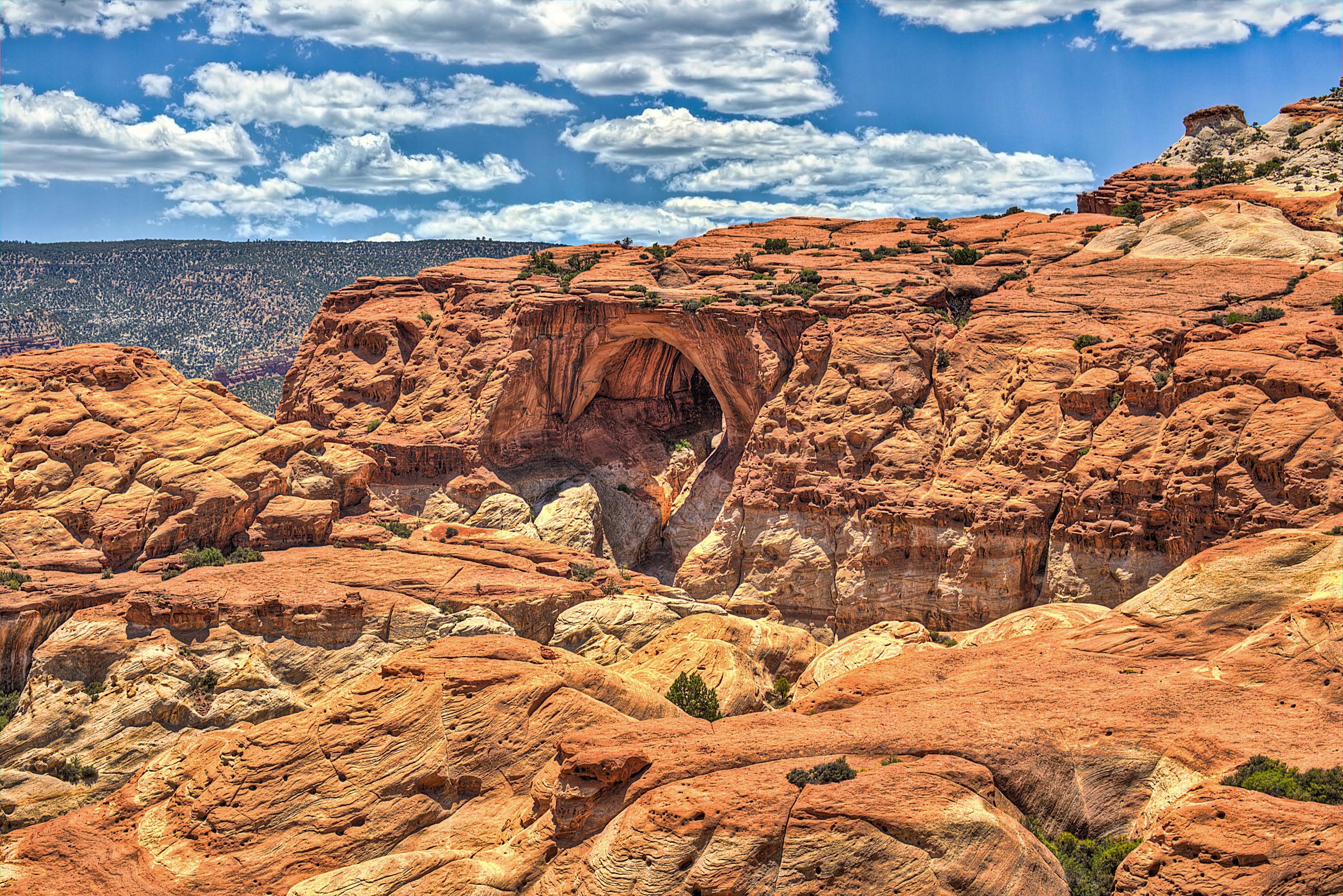
Like a true Western, the history of Capitol Reef is a story of larger than life heroes, beautiful desert landscapes, and rampant, unlicensed Uranium mining.
Riding out from the town of Wayne, Utah in the early 1920s, a man by the name of “Ephraim Portman Pectol” would discover a massive, dramatic landscape of reef-like rock formations that he would call “Wayne Wonderland.” Dedicating the remainder of his life to protecting the area, Ephraim would eventually become a US Congressman and personally lobby FDR to make the area a National Monument in 1937.
Existing in relative isolation for the next 13 years, the Government would eventually show it’s appreciation for the beautiful land in the 1950s, by allowing the then omnipotent Atomic Energy Commission (AEC) to open up the area for Uranium prospecting. A six-year battle would follow between the area’s only ranger, Charles Kelly and an army of Daniel Day Lewis-esque prospectors, hoping to strike it rich. The prospectors inflicted significant damage to the land and lacking the authority to police them, Kelly would note in frustration that he “feels like the man who had the rug pulled from under him while out on a limb holding a bear by the tail.”
Finally, in 1959 the Government would reverse its decision and put an end to the uranium mining. The first major road to the Monument would be completed in 1962 and with the subsequent rise in tourism, Richard Nixon would declare the area the 35th National park in 1971, under the catchy name “Capitol Reef” (Reef from the landscape, Capitol from the dome shaped rocks).
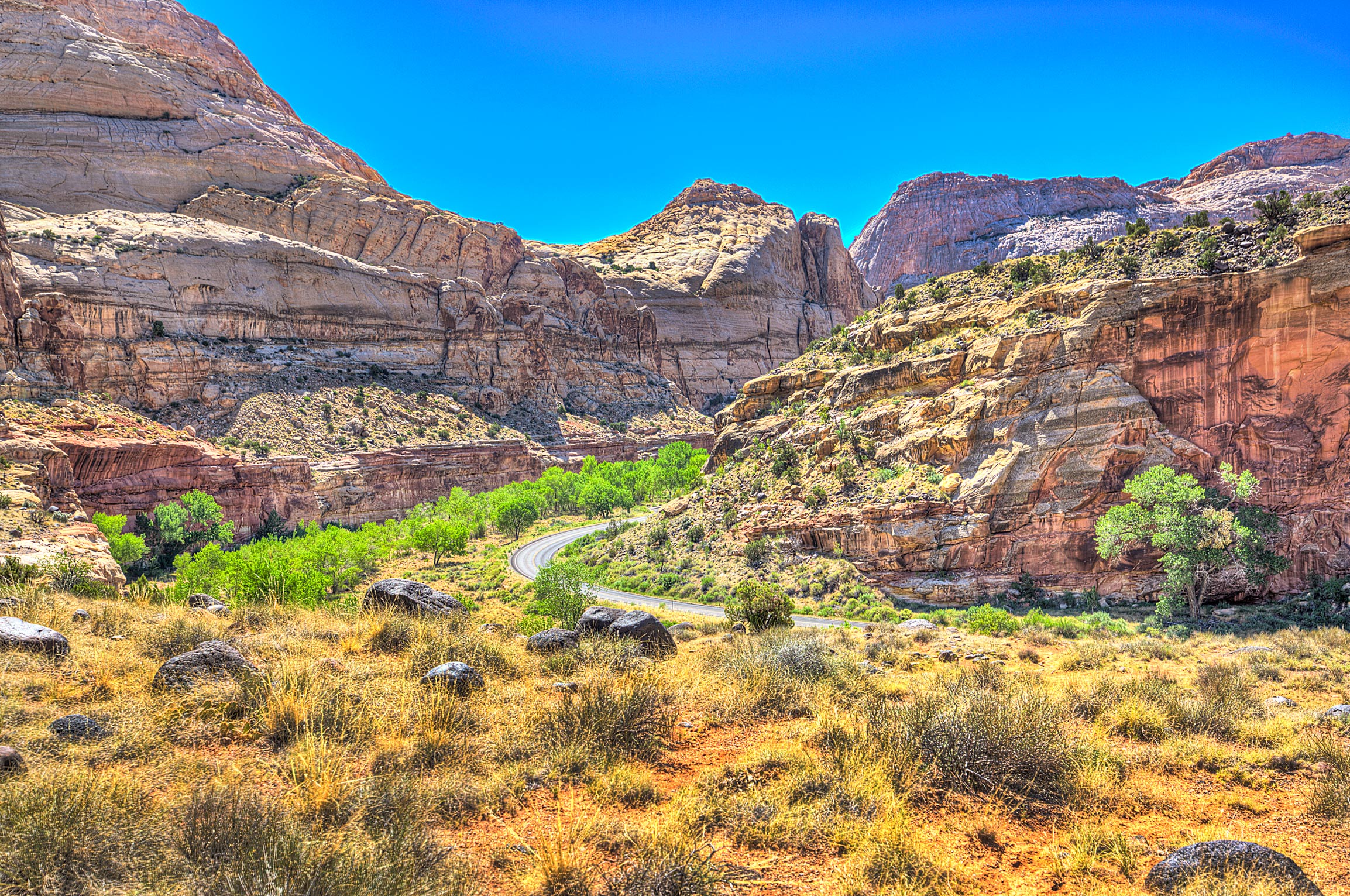
Today, the park is the 4th most visited park in Utah after Zion, Bryce, and Arches. Arriving by car from Bryce (far and away the easiest way to get there), I was immediately struck by the odd fact there is no real entrance to the park nor do there seem to be rangers anywhere. In fact, despite arriving on a Sunday, there were very few people anywhere.
A quick stop at the visitor’s center would solve some of the mystery, as I would discover that the vast majority of the people in the park were over the age of 70, and thus were not likely to be hiking out in the 100-degree desert heat. Clearly catering to their audience, large sections of the park are now accessible via a paved “scenic drive” which contains numerous viewpoints to large rock monuments-
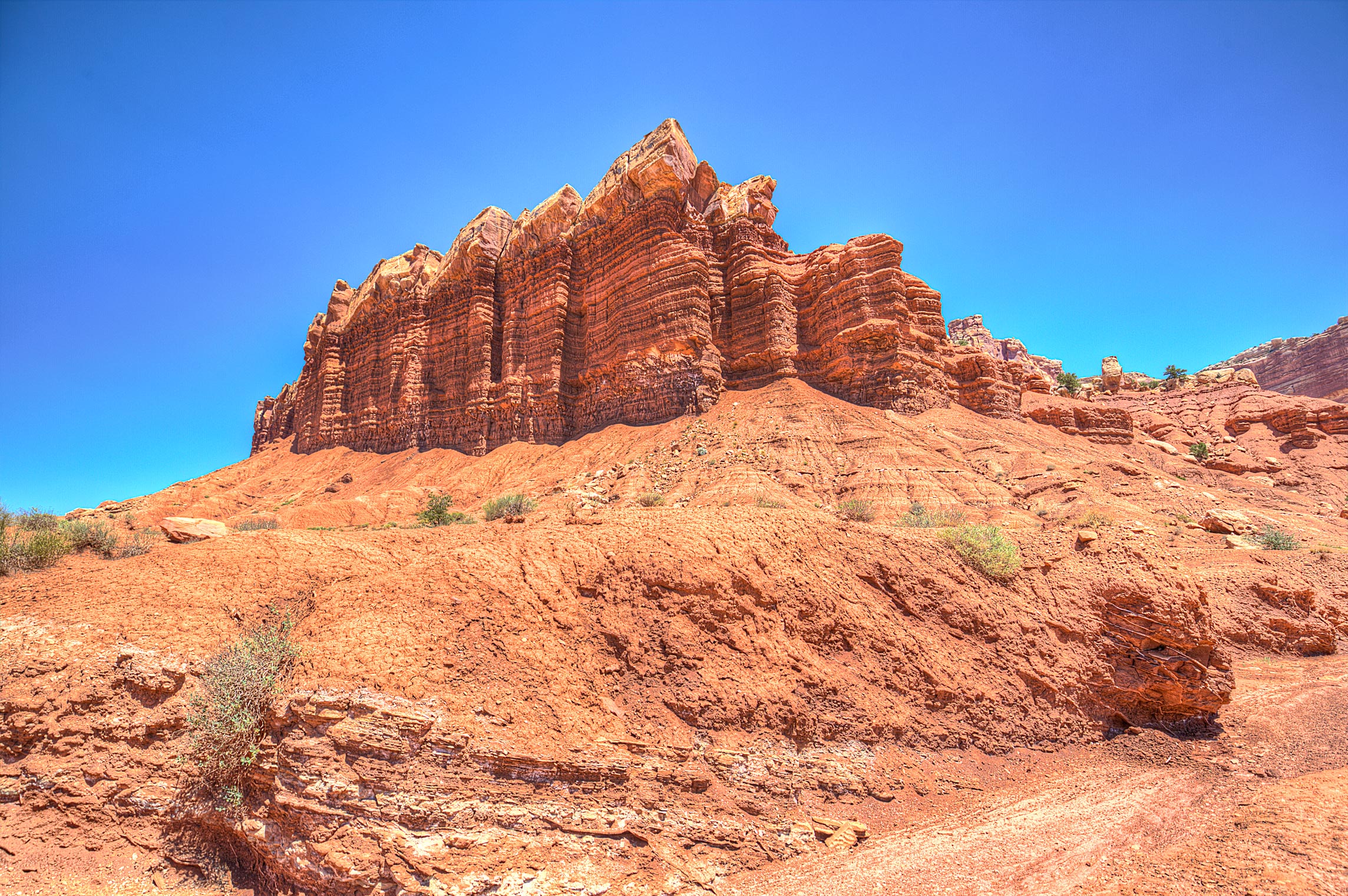
And short hikes to massive natural archways:
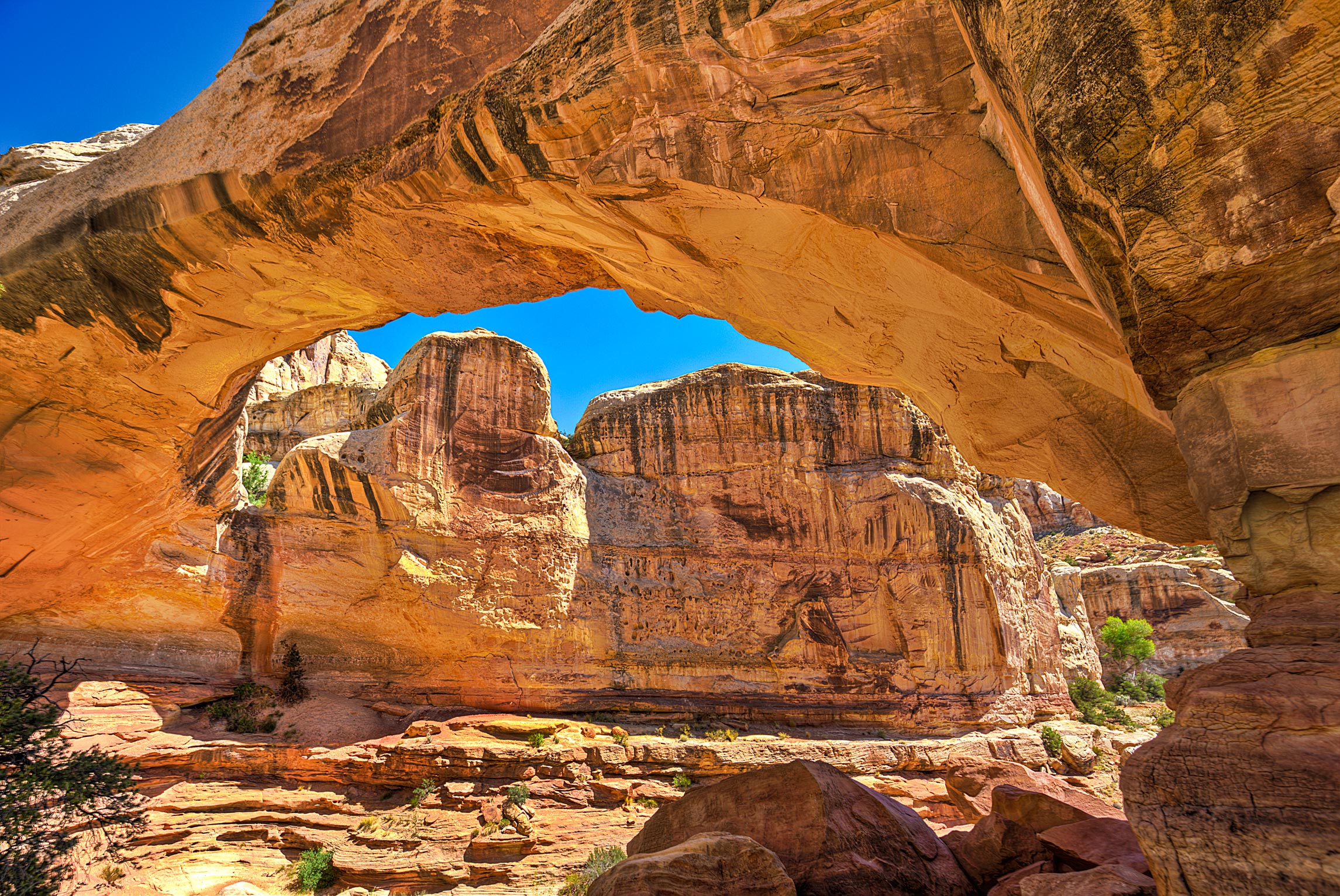
Seeing as I had driven nearly 2 hours to get to the park and was determined to put my pasty skin to the test against the blazing heat, I set off to find a big hike and ended up settling on a walk to something called “Cassidy Arch,” which is a huge archway seated at the top of a large ridge on the famous “Waterpocket fold.” In a classic example of Mormon honesty, the park’s 18-minute documentary notes that although the arch is named after “Butch Cassidy,” there is no actual evidence that he ever came through the region and that the name was chosen purely to add marketing pizazz.
Due to a bad combination of navigational errors and stubbornness, I would turn this relatively easy 3-mile tramp through the desert into a 5-mile off-trail adventure full of bouldering, sweating, and cursing. It would take about an hour of me ignoring the fact that I wasn’t on an actual trail before I was able to course correct and at long last see the arch:
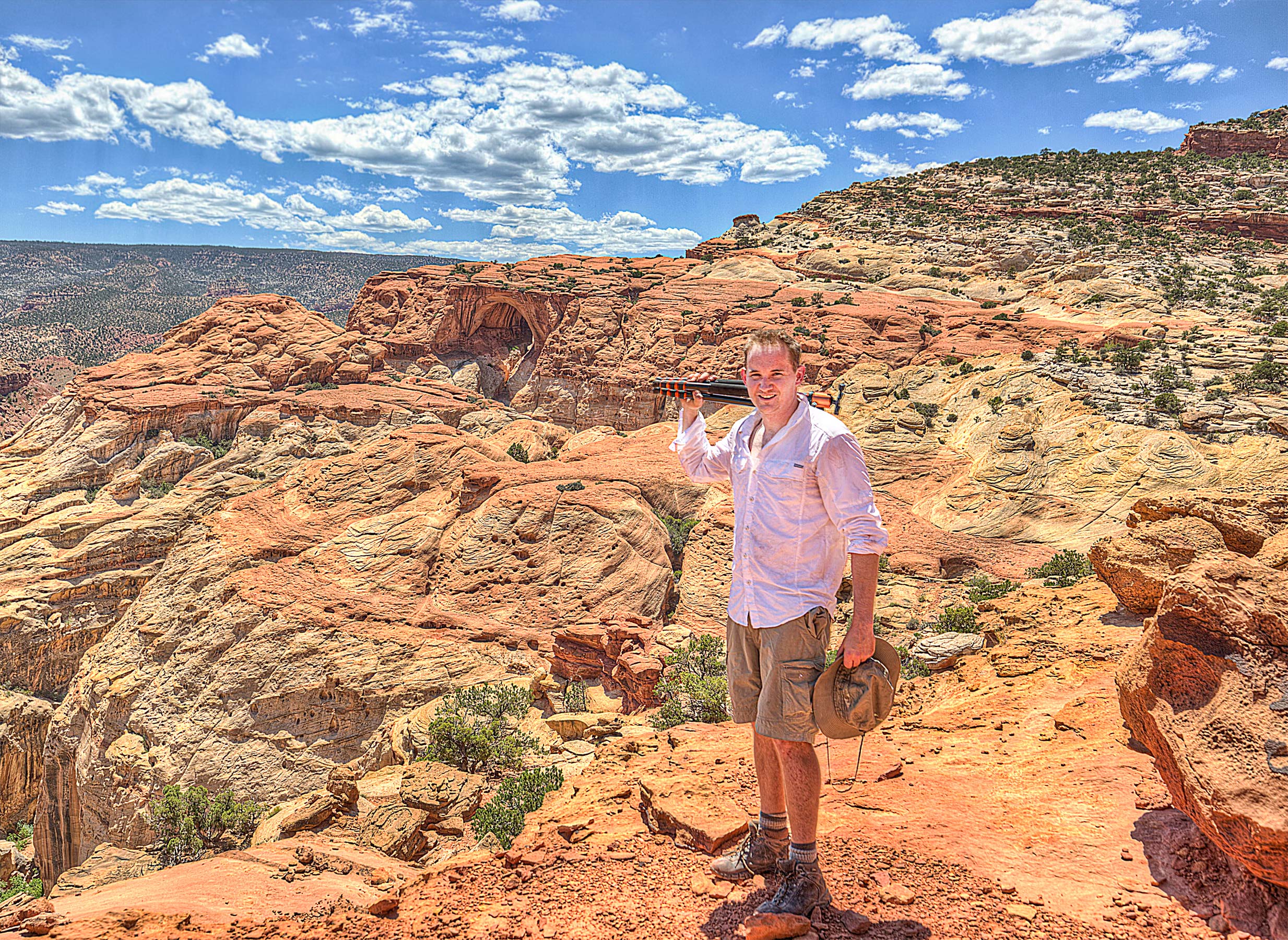
I opted to not stay the night at Capitol Reef and I can say with confidence that the day trip was more than enough to see this park. From Bryce Canyon, it’s an easy 2-hour drive and most of the main attractions in the park can be seen within the first 2 hours. For those seeking to do longer hikes, there are a few 8+ mile hikes in the park, although I would advise that it is quite hot there and unlike Zion and Bryce, there are no trees to hide under.
This was my last park on this Utah trip- I will be back in the near future to do the last two parks there- Arches and Canyonlands. So long for now!
-MB
Categories: US National Parks
Tags: Cassidy Arch, driving from bryce canyon to capitol reef, Hikes in Capitol Reef, how many days should I spend in Capitol Reef, How to get to Capitol Reef, How to get to Capitol Reef National Park, National Parks in Utah, things to do in capitol reef, Utah, Visiting all 59 National Parks, What to do in Capitol Reef, What to do in Capitol Reef National Park.


